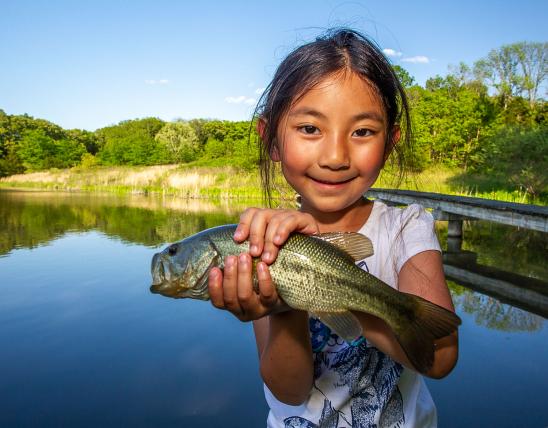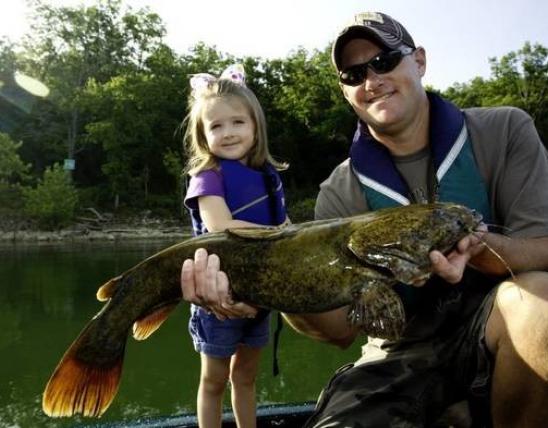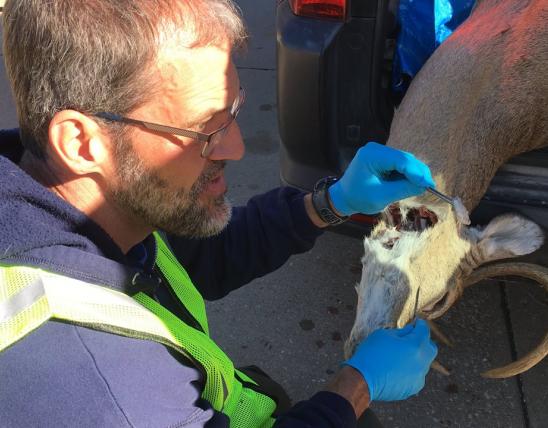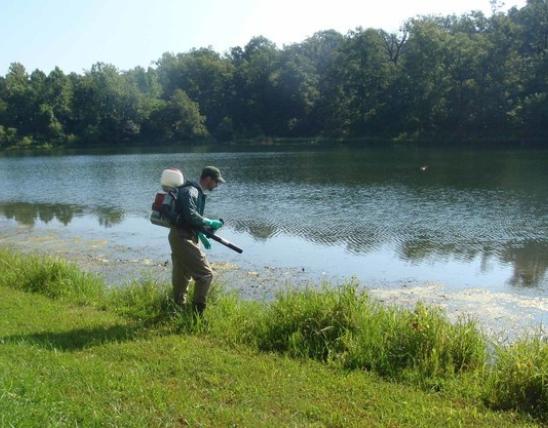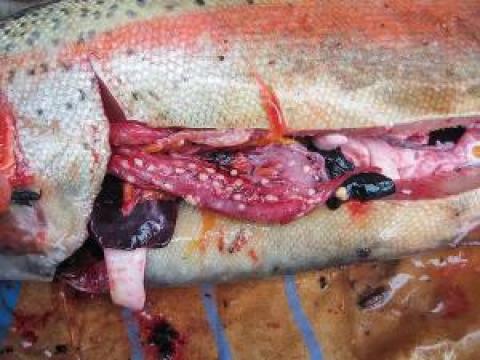Commonly Infected Wildlife
Fish. Northern pike, walleye, perch, and trout are commonly affected, but other species can also be infected.
Is This Animal Infected?
Tapeworm larvae (plerocercoids) often appear as white cysts or coiled worms in the flesh or internal organs.
The larvae are typically 1/8 to 1/2 inch in length.
Can I Get It?
Yes. Some species (Diphyllobothrium) can infect humans who eat raw or undercooked fish. The ingested larvae mature into adult tapeworms that can survive and grow in the intestines.
How Bad Can It Get?
Medication is available that kills the tapeworm.
Oregon Department of Fish and Wildlife, Fish Health Section
Symptoms in Humans
- Most infections do not have symptoms, but abdominal discomfort, diarrhea, vomiting, and weight loss may be present.
- Adult tapeworms can grow to 30 feet long and cause intestinal blockage.
- In severe cases, vitamin B12 deficiency, leading to pernicious anemia, may occur.
Protect Myself and Others
Avoid raw and cold smoked or cold pickled fish. Fillets should be properly cleaned, prepared, and cooked to 145°F. Freezing raw fillets at -4°F or below for seven days also kills tapeworms.
Safe for Pets?
No. The fish is not safe if it is raw. Fish must be cooked or frozen to the same temperatures recommended for human consumption.
What Causes It?
The Diphyllobothrium cestode (tapeworm) larva. Fish consume infected crustaceans and minnows, and the larvae migrate to the flesh or internal organs of the fish.
There are several other adult tapeworms (flatworms), including Triaenophorous spp., found in the intestines of fish that do not infect humans. They can be hard to distinguish from the kind that infects humans.



